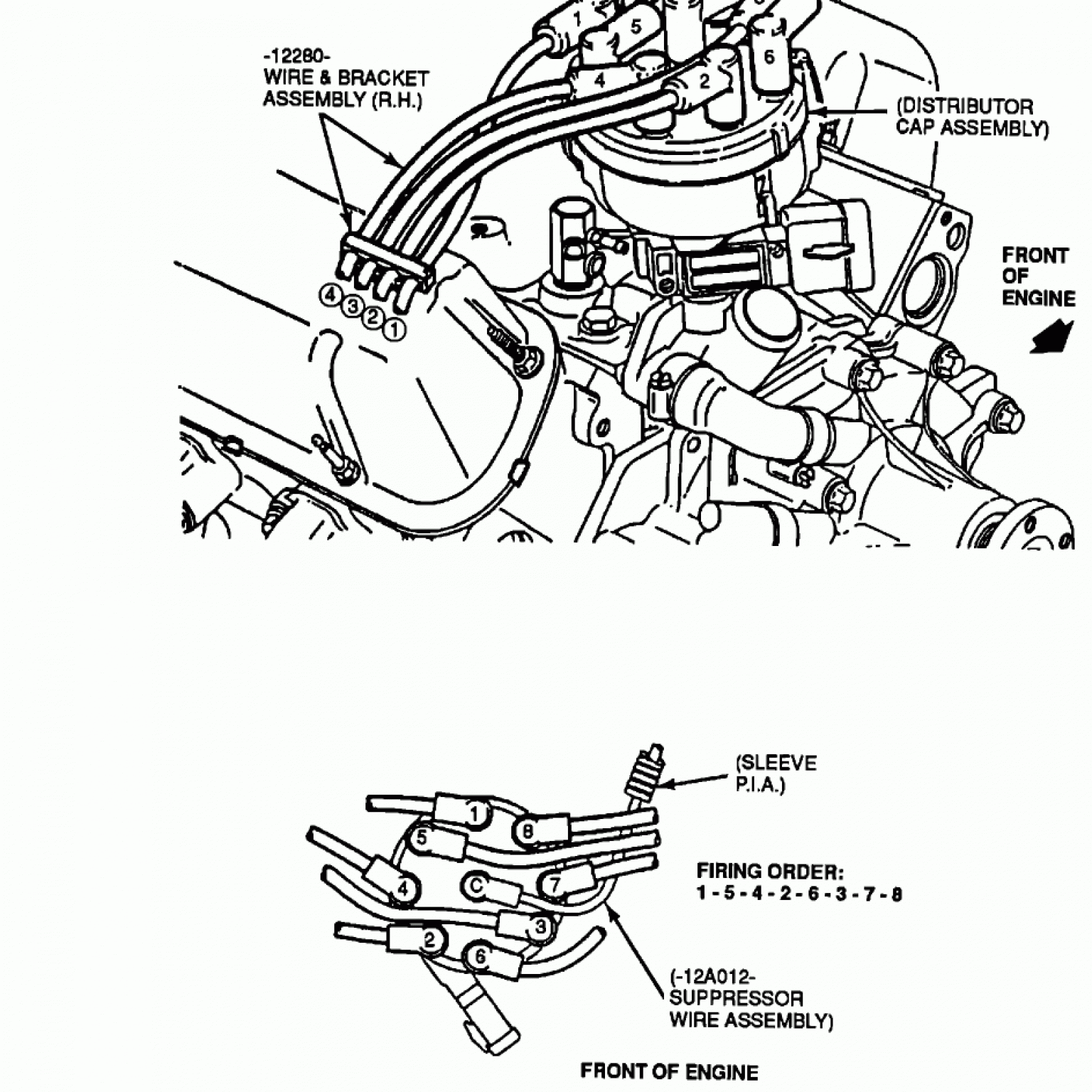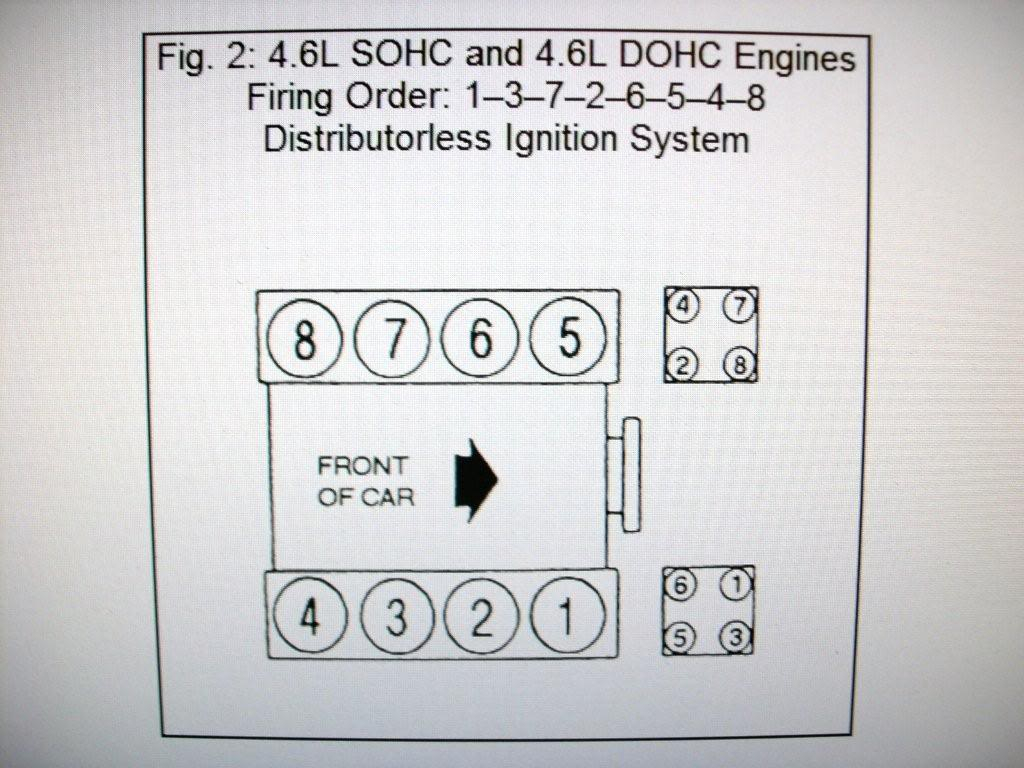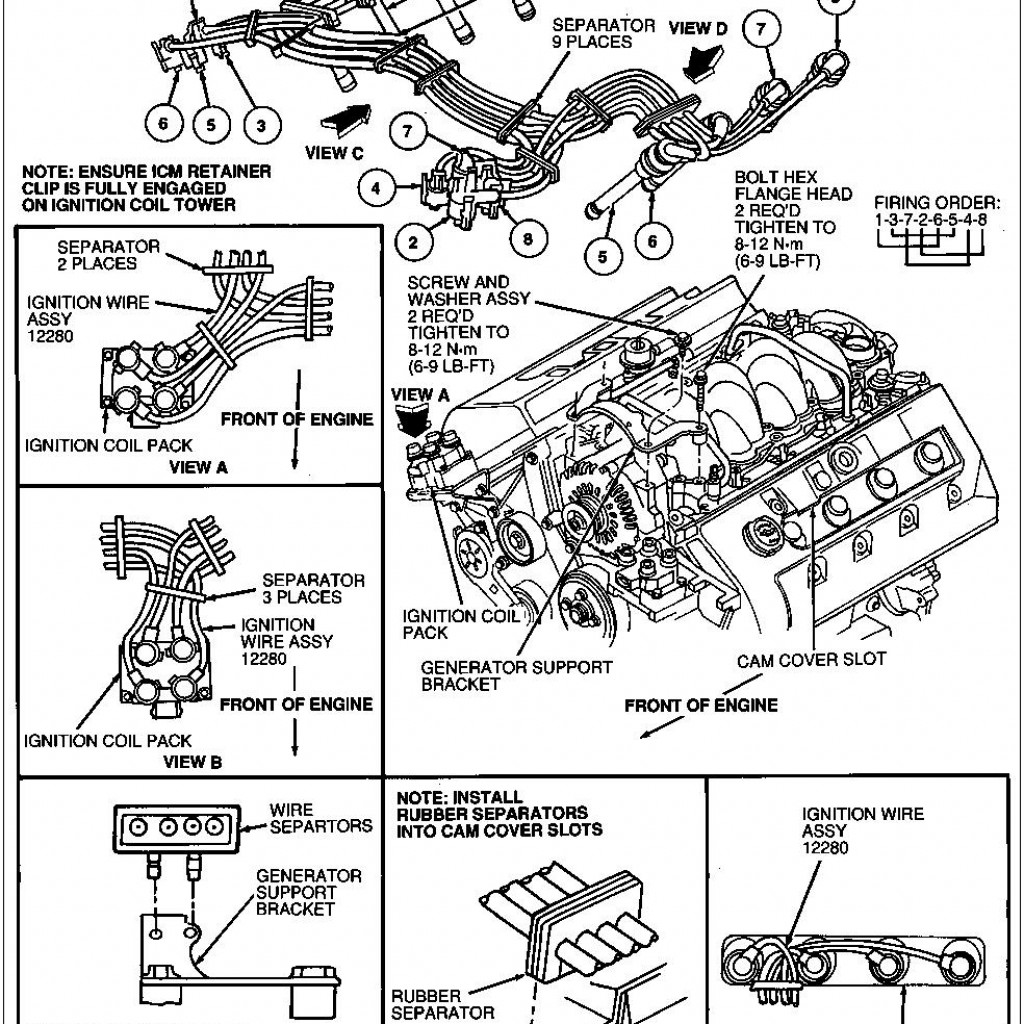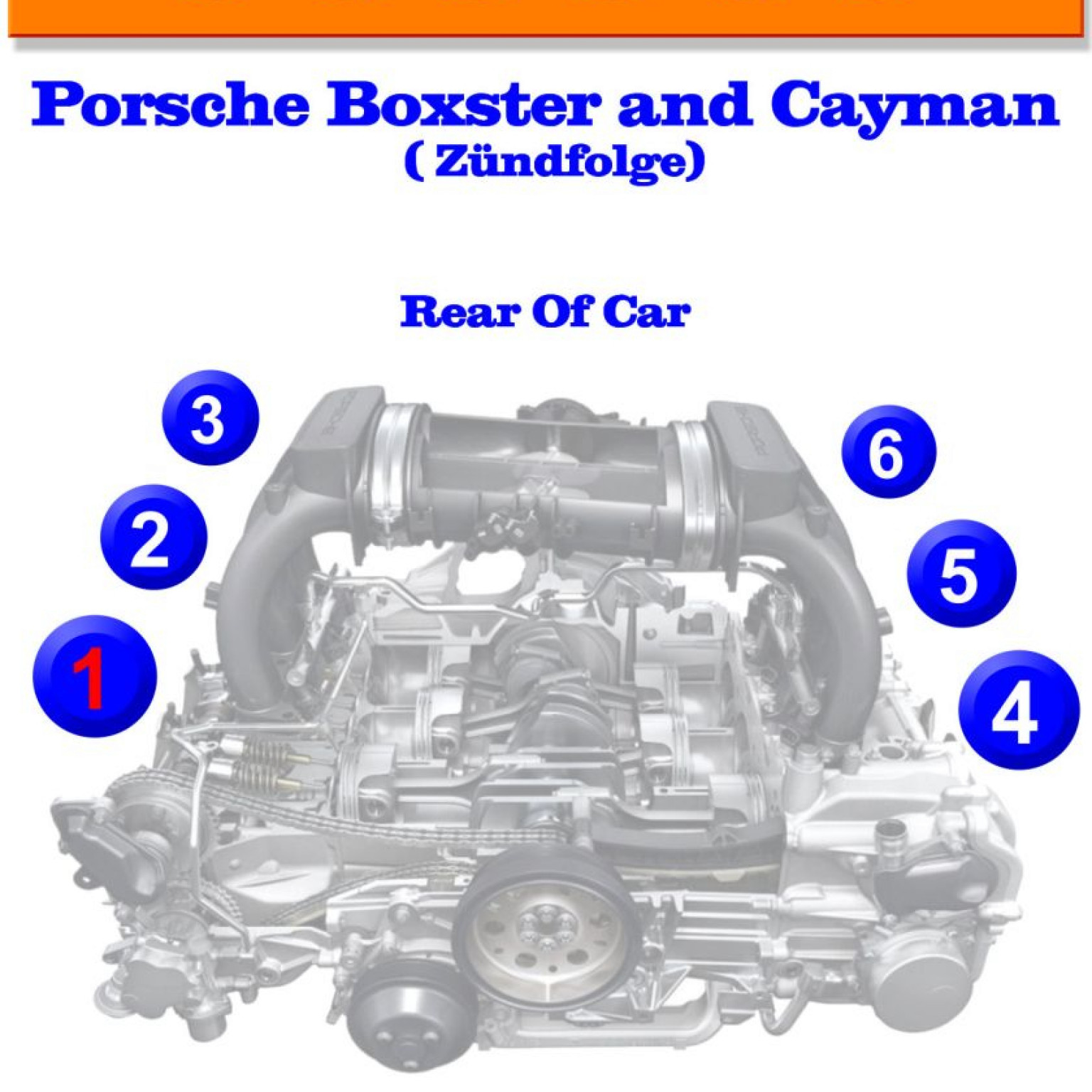Diagram porsche boxster 1999 sparkplug firing order – Diagram Porsche Boxster 1999 spark plug firing order – the very phrase evokes images of sleek German engineering and the symphony of a powerful engine. But beneath the hood, there’s a precise choreography of spark plugs igniting the fuel-air mixture in a specific sequence, directly impacting the Boxster’s performance.
Understanding this firing order is crucial for any Boxster owner who wants to maintain optimal engine health and performance.
The 1999 Porsche Boxster, a beloved roadster known for its spirited driving experience, is powered by a 2.5-liter flat-six engine. This engine features a unique firing order that ensures smooth operation and maximum power output. We’ll delve into the specifics of this firing order, exploring its significance, how it affects engine performance, and how to visually represent it.
We’ll also uncover some interesting facts about the 1999 Boxster and its engine that you may not have known before.
Introduction to the 1999 Porsche Boxster: Diagram Porsche Boxster 1999 Sparkplug Firing Order
The 1999 Porsche Boxster marked the return of a mid-engine, two-seater roadster to the Porsche lineup after the discontinuation of the 914 in 1976. This model, designed by Harm Lagaay, was a departure from the traditional 911, introducing a more affordable and accessible Porsche to a wider audience.
It quickly became a popular choice for its stylish design, sporty handling, and relatively affordable price tag.The Boxster’s success can be attributed to its unique combination of performance, practicality, and affordability. The engine, a 2.5-liter naturally aspirated flat-six, produced 201 horsepower and 169 lb-ft of torque, allowing the car to accelerate from 0 to 60 mph in under 6 seconds.
The car’s lightweight construction and mid-engine layout provided exceptional handling and agility, making it a joy to drive on both winding roads and racetracks.Understanding the spark plug firing order is crucial for ensuring optimal engine performance. It determines the sequence in which the spark plugs ignite the air-fuel mixture in the cylinders, ensuring smooth and efficient combustion.
An incorrect firing order can lead to misfires, reduced power, and potential engine damage.
The 1999 Porsche Boxster Engine
The 1999 Porsche Boxster was equipped with a 2.5-liter naturally aspirated flat-six engine, designated as the M52 engine. This engine featured a unique design with horizontally opposed cylinders, resulting in a low center of gravity and improved handling. The engine’s key specifications include:
- Displacement:2.5 liters (2480 cc)
- Configuration:Horizontally opposed six-cylinder (flat-six)
- Power Output:201 horsepower (150 kW) at 6800 rpm
- Torque:169 lb-ft (228 Nm) at 4500 rpm
- Bore and Stroke:84 mm x 75 mm
- Compression Ratio:10.8:1
- Valvetrain:4 valves per cylinder, DOHC
- Fuel System:Multi-point fuel injection
The M52 engine was known for its smooth and responsive performance, as well as its reliability. Its design incorporated advanced features such as variable valve timing (VANOS) to optimize engine performance across the rev range.
Understanding Spark Plug Firing Order

The firing order of spark plugs in an internal combustion engine is a crucial aspect of its operation. It dictates the sequence in which the cylinders ignite, ensuring smooth and efficient power delivery. Understanding this order is essential for diagnosing engine issues and optimizing performance.
The Importance of Firing Order, Diagram porsche boxster 1999 sparkplug firing order
The firing order plays a significant role in engine performance and efficiency. It influences several factors, including:
- Smooth Power Delivery:A well-defined firing order ensures that power strokes occur in a balanced and staggered manner, resulting in smooth engine operation and reduced vibrations. This is particularly important in high-performance engines where uneven power delivery can lead to instability and reduced performance.
- Reduced Engine Load:By carefully selecting the firing order, engineers can minimize the load on the crankshaft and connecting rods. This reduces stress on these components, contributing to increased engine longevity and reliability.
- Enhanced Fuel Efficiency:An optimal firing order promotes complete combustion and reduces exhaust emissions, leading to better fuel efficiency and reduced environmental impact.
- Improved Engine Performance:By ensuring a consistent and efficient power delivery cycle, a well-defined firing order contributes to improved engine performance, including increased horsepower and torque.
Relationship Between Firing Order and Engine Design
The firing order is directly influenced by the engine’s design, particularly the number of cylinders and their arrangement. For instance, a four-cylinder engine typically has a firing order of 1-3-4-2, while a six-cylinder engine might have a firing order of 1-5-3-6-2-4.
The firing order is determined by factors such as the crankshaft throw angles, connecting rod lengths, and the desired power delivery characteristics.
- Crankshaft Design:The crankshaft’s throw angles and connecting rod lengths dictate the timing of piston movement and, consequently, the firing order. This ensures that power strokes occur at specific intervals, resulting in smooth and efficient operation.
- Engine Balance:The firing order plays a crucial role in maintaining engine balance, minimizing vibrations, and reducing noise. Engineers carefully select the firing order to counterbalance the forces generated during combustion, resulting in a smoother and more refined engine experience.
- Performance Optimization:The firing order can be adjusted to optimize engine performance for specific applications. For instance, a race car engine might have a different firing order than a standard road car engine to maximize power and torque output.
Identifying the 1999 Boxster Spark Plug Firing Order
The 1999 Porsche Boxster is equipped with a 2.5-liter horizontally opposed six-cylinder engine. Understanding the firing order is crucial for proper engine operation and troubleshooting. This section will detail the firing order of the 1999 Boxster engine and provide guidance on how to determine it.
Firing Order Sequence
The 1999 Porsche Boxster engine utilizes a specific firing order to ensure smooth and efficient combustion. The firing order sequence is as follows:
1-4-2-5-3-6
This sequence indicates the order in which the spark plugs ignite within the engine’s cylinders. Cylinder 1 ignites first, followed by cylinder 4, then cylinder 2, and so on. This sequence ensures that the engine’s power strokes are evenly distributed, resulting in a balanced and smooth operation.
Determining the Firing Order
There are several ways to determine the firing order of the 1999 Boxster engine:
- Consult the Owner’s Manual:The owner’s manual for the 1999 Boxster should include the firing order sequence. This is the most reliable source of information.
- Refer to a Repair Manual:Repair manuals specific to the 1999 Boxster often provide detailed information about the engine, including the firing order.
- Use Online Resources:Several online resources, such as automotive forums and websites, can provide information on the firing order for specific vehicle models.
Visual Representation of the Firing Order

The firing order of a car engine determines the sequence in which the spark plugs ignite the air-fuel mixture in each cylinder. Understanding the firing order is crucial for proper engine operation and performance. This section will visually illustrate the firing order for the 1999 Porsche Boxster engine.
Firing Order Diagram
The firing order for the 1999 Porsche Boxster engine is 1-4-3-This means that cylinder 1 fires first, followed by cylinder 4, then cylinder 3, and finally cylinder
2. The following diagram visually represents this firing order
[Insert image of the firing order diagram here]The diagram depicts the engine’s cylinders arranged in a horizontal row, with each cylinder labeled numerically. Arrows indicate the firing order, starting from cylinder 1 and moving sequentially to cylinder 4. This visual representation provides a clear understanding of how the spark plugs ignite in a specific sequence to ensure smooth engine operation.
Importance of Correct Spark Plug Firing Order
The 1999 Porsche Boxster’s engine relies on a precise firing order to function optimally. Maintaining the correct spark plug firing order is crucial for smooth engine operation, optimal performance, and preventing potential damage. A misaligned firing order can lead to a cascade of problems, affecting the engine’s efficiency and longevity.
Consequences of Incorrect Spark Plug Firing Order
An incorrect spark plug firing order can have significant consequences for the engine. It disrupts the engine’s carefully balanced combustion process, leading to a range of issues that affect performance and fuel efficiency.
- Misfires:When the spark plugs fire out of sequence, the combustion process becomes erratic. This can lead to misfires, which are instances where the fuel-air mixture in the cylinder does not ignite properly. Misfires can cause rough idling, engine hesitation, and reduced power output.
- Engine Vibration:The engine’s internal forces are designed to work in harmony. A misaligned firing order can cause uneven forces within the engine, leading to increased vibration and noise. This can result in discomfort for the driver and potentially damage engine components over time.
- Reduced Fuel Efficiency:Misfires and inefficient combustion caused by an incorrect firing order can lead to increased fuel consumption. The engine may need to burn more fuel to compensate for the misfires, resulting in poorer fuel economy.
- Increased Emissions:Misfires can also contribute to increased emissions. When the fuel-air mixture does not burn completely, unburned hydrocarbons and other pollutants are released into the exhaust. This can lead to higher emissions levels, impacting air quality and potentially causing damage to the catalytic converter.
- Engine Damage:In severe cases, an incorrect firing order can lead to engine damage. The uneven forces and vibrations caused by misfires can stress engine components, potentially causing damage to pistons, connecting rods, or other internal parts.
Impact on Engine Performance and Fuel Efficiency
The incorrect firing order directly affects the engine’s performance and fuel efficiency. The engine relies on a precise sequence of combustion events to produce power smoothly and efficiently. A misaligned firing order disrupts this delicate balance, resulting in a range of issues:
- Loss of Power:Misfires and uneven combustion can significantly reduce engine power. The engine may struggle to accelerate, and the overall driving experience can be compromised.
- Rough Idling:The engine may idle unevenly or stall due to misfires. This can be particularly noticeable at low engine speeds.
- Engine Hesitation:The engine may hesitate or stumble when accelerating, as the misfires disrupt the smooth flow of power delivery.
- Increased Fuel Consumption:As mentioned earlier, misfires lead to inefficient combustion, requiring the engine to burn more fuel to compensate for the lost power. This can result in a noticeable decrease in fuel economy.
Potential Risks Associated with Incorrect Firing Order
An incorrect spark plug firing order can pose several risks, potentially leading to serious problems:
- Engine Failure:In extreme cases, prolonged misfires and engine stress caused by an incorrect firing order can lead to catastrophic engine failure. This can be a costly and time-consuming repair.
- Safety Hazards:Engine misfires can cause the vehicle to lose power unexpectedly, potentially leading to dangerous situations, especially while driving at high speeds or in traffic.
- Increased Maintenance Costs:An incorrect firing order can lead to premature wear and tear on engine components, resulting in more frequent repairs and higher maintenance costs.
Maintaining Optimal Engine Performance

Maintaining the correct spark plug firing order is crucial for the smooth and efficient operation of your 1999 Porsche Boxster’s engine. When the spark plugs fire in the wrong sequence, it can lead to misfires, reduced power, and increased fuel consumption.
Importance of Regular Spark Plug Inspections and Replacements
Regular spark plug inspections and replacements are essential for ensuring optimal engine performance. Spark plugs are responsible for igniting the air-fuel mixture in the combustion chamber, and over time, they can wear down or become fouled with deposits. This can lead to a decrease in engine performance and fuel efficiency.
- Inspecting spark plugs regularly allows you to identify any signs of wear or damage. This includes checking for electrode erosion, carbon buildup, and cracks in the insulator.
- Replacing spark plugs at the recommended intervals ensures that they are functioning optimally. The recommended replacement interval for spark plugs in a 1999 Porsche Boxster is typically between 30,000 and 60,000 miles.
- Using the correct spark plugs for your engine is essential. Consult your owner’s manual or a trusted mechanic to determine the appropriate spark plug type and gap for your 1999 Boxster.
The Role of Proper Engine Maintenance in Ensuring Optimal Performance
Proper engine maintenance is crucial for maintaining optimal performance and extending the life of your 1999 Porsche Boxster. This includes regular oil changes, air filter replacements, and coolant flushes.
- Regular oil changes help to lubricate the engine components and remove contaminants, reducing wear and tear.
- Replacing the air filter ensures that the engine receives a clean supply of air, improving combustion and fuel efficiency.
- Flushing the coolant system helps to prevent overheating and corrosion, ensuring that the engine runs at the optimal temperature.
Practical Applications of Understanding Firing Order
Understanding the firing order of a 1999 Porsche Boxster’s engine is not merely academic knowledge; it’s a practical tool for diagnosing issues, fine-tuning performance, and ensuring the longevity of your engine. This knowledge empowers you to understand the intricate dance of combustion within your engine and address potential problems effectively.
Troubleshooting Engine Issues
A misfiring engine is a common problem that can be caused by a variety of factors, including faulty spark plugs, ignition wires, or even a malfunctioning distributor. Understanding the firing order allows you to isolate the source of the misfire by listening to the engine’s sound and observing the spark plug wires.
For example, if you notice a misfire in cylinder number 2, you can check the spark plug, ignition wire, and the associated components for cylinder 2, guided by the firing order.
Tuning and Optimizing Engine Performance
The firing order plays a crucial role in achieving optimal engine performance. A well-tuned engine with proper ignition timing, fuel delivery, and spark plug firing sequence will run smoothly, efficiently, and with maximum power output. By understanding the firing order, you can adjust the ignition timing, fuel delivery, and other engine parameters to achieve peak performance.
For instance, adjusting the ignition timing based on the firing order can optimize combustion efficiency, leading to improved power and fuel economy.
Real-World Applications
The knowledge of firing order is invaluable for various practical situations:
- Diagnosing Misfires:By listening to the engine’s sound and observing the spark plug wires, you can identify the cylinder responsible for the misfire based on the firing order. This allows for targeted troubleshooting, focusing on the specific cylinder and its associated components.
Understanding the spark plug firing order for a 1999 Porsche Boxster is crucial for maintaining optimal engine performance. The sequence dictates the precise timing of each cylinder’s ignition, ensuring a smooth and efficient combustion process. Similarly, a well-organized vacuum hose system in a Triton Ford 5.4 engine, as illustrated in the triton ford 5.4 vacuum hose diagram , is essential for maintaining proper air intake and fuel delivery.
Just as the spark plug firing order guides the Boxster’s engine, a clear understanding of the vacuum hose layout in the Triton Ford 5.4 ensures a well-tuned and responsive engine.
- Adjusting Ignition Timing:The firing order is essential for accurately adjusting the ignition timing. The ignition timing must be synchronized with the firing order to ensure optimal combustion and engine performance. This adjustment can be done using a timing light, which illuminates the timing marks on the engine, and a knowledge of the firing order.
- Replacing Spark Plugs and Wires:When replacing spark plugs or ignition wires, understanding the firing order ensures that the new components are installed correctly. This is crucial for maintaining proper ignition and engine performance.
- Troubleshooting Electrical Issues:Understanding the firing order helps in tracing electrical issues in the ignition system. If a spark plug wire is disconnected or misconnected, the firing order can be used to identify the affected cylinder and the corresponding wire.
Engine Components and Their Relationship to Firing Order

The firing order of a 1999 Porsche Boxster’s engine is not merely a sequence of numbers; it’s a carefully orchestrated dance of components working in harmony to deliver optimal power and efficiency. Understanding how these components interact with the firing order is crucial for maintaining the engine’s health and performance.
Components Involved in Firing Order
The firing order is the sequence in which the spark plugs ignite the air-fuel mixture in the cylinders, dictating the power strokes of the engine. Several components play critical roles in this process.
| Component | Function | Relationship to Firing Order | Malfunction Impact |
|---|---|---|---|
| Spark Plugs | Ignite the air-fuel mixture in the cylinders, initiating combustion. | The firing order determines the sequence in which spark plugs ignite, ensuring a smooth and efficient power delivery cycle. | Misfiring, reduced engine power, rough idle, and potential engine damage. |
| Ignition Coil | Provides the high voltage needed to fire the spark plugs. | The ignition coil distributes the high voltage to the spark plugs according to the firing order, ensuring the correct cylinder ignites at the right time. | Misfiring, reduced engine power, rough idle, and potential engine damage. |
| Camshaft | Controls the timing of the valves, allowing air and fuel to enter the cylinders and exhaust gases to exit. | The camshaft’s timing directly affects the firing order, as it controls when the intake and exhaust valves open and close, influencing the timing of the combustion cycle. | Incorrect valve timing, misfiring, reduced engine power, and potential engine damage. |
| Crankshaft | Converts the linear motion of the pistons into rotational motion, driving the engine’s power output. | The crankshaft’s rotation determines the position of the pistons and the timing of the combustion cycle, directly influencing the firing order. | Uneven engine rotation, reduced power output, and potential engine damage. |
For example, if the camshaft is mistimed, the valves might open and close at the wrong times, disrupting the combustion cycle and affecting the firing order. This can lead to misfires, reduced power, and even engine damage.
Troubleshooting Engine Issues Related to Firing Order

Understanding the proper spark plug firing order is crucial for maintaining optimal engine performance. A misfiring order can lead to various engine issues, impacting performance, fuel efficiency, and even causing damage to the engine. This section explores common engine problems linked to incorrect firing order, their symptoms, causes, and troubleshooting steps.
Engine Misfires
Engine misfires are a common symptom of an incorrect firing order. A misfire occurs when a cylinder fails to ignite the air-fuel mixture properly, leading to a loss of power and a rough idle.
- Symptoms:Engine misfires can manifest in various ways, including:
- Rough idling
- Loss of power
- Engine vibration
- Backfiring
- Check engine light (CEL) illumination
- Causes:A misfiring engine can be caused by several factors, including:
- Incorrect firing order:A misconfigured firing order disrupts the combustion process, leading to misfires.
- Faulty spark plugs:Worn or damaged spark plugs can cause misfires.
- Damaged spark plug wires:Cracked or corroded wires can hinder the flow of electrical current to the spark plugs.
- Fuel delivery issues:Problems with the fuel injectors, fuel pump, or fuel pressure regulator can lead to misfires.
- Air intake issues:A clogged air filter or a leak in the intake manifold can disrupt the air-fuel mixture.
- Troubleshooting:
- Check the firing order:Ensure the firing order is correctly set according to the engine specifications.
- Inspect the spark plugs:Examine the spark plugs for signs of wear, damage, or carbon buildup.
- Check the spark plug wires:Inspect the wires for cracks, corrosion, or loose connections.
- Diagnose fuel delivery system:Use a fuel pressure gauge to check fuel pressure and verify the injectors are functioning correctly.
- Inspect the air intake system:Check for leaks, obstructions, or a clogged air filter.
- Use a diagnostic scanner:A scanner can retrieve engine codes that can pinpoint the cause of the misfire.
Engine Vibration
An incorrect firing order can lead to engine vibration. This occurs because the combustion process is disrupted, causing uneven power delivery and vibrations.
- Symptoms:Engine vibration can be felt throughout the vehicle, especially at idle. It may also be accompanied by a rough idle.
- Causes:
- Incorrect firing order:A misconfigured firing order disrupts the combustion process, leading to uneven power delivery and vibrations.
- Engine mounts:Worn or damaged engine mounts can exacerbate vibrations.
- Unbalanced engine components:An imbalance in the crankshaft, pistons, or connecting rods can cause vibrations.
- Troubleshooting:
- Check the firing order:Ensure the firing order is correctly set according to the engine specifications.
- Inspect engine mounts:Examine the engine mounts for signs of wear, cracks, or damage.
- Balance engine components:If necessary, have the engine components balanced to ensure smooth operation.
Reduced Engine Performance
A misfiring order can negatively impact engine performance, leading to a noticeable decrease in power output.
- Symptoms:Reduced engine performance can manifest as:
- Sluggish acceleration
- Difficulty climbing hills
- Lower top speed
- Causes:
- Incorrect firing order:A misconfigured firing order disrupts the combustion process, reducing the engine’s power output.
- Restricted airflow:A clogged air filter or a leak in the intake manifold can restrict airflow, reducing engine power.
- Fuel delivery issues:Problems with the fuel injectors, fuel pump, or fuel pressure regulator can hinder fuel delivery, leading to reduced power.
- Troubleshooting:
- Check the firing order:Ensure the firing order is correctly set according to the engine specifications.
- Inspect the air intake system:Check for leaks, obstructions, or a clogged air filter.
- Diagnose fuel delivery system:Use a fuel pressure gauge to check fuel pressure and verify the injectors are functioning correctly.
Increased Fuel Consumption
A misfiring engine can lead to increased fuel consumption. This is because the engine is not burning fuel efficiently due to the disrupted combustion process.
- Symptoms:Increased fuel consumption can be noticed by:
- Lower fuel mileage
- More frequent refueling
- Causes:
- Incorrect firing order:A misconfigured firing order disrupts the combustion process, leading to incomplete fuel combustion and increased fuel consumption.
- Fuel delivery issues:Problems with the fuel injectors, fuel pump, or fuel pressure regulator can cause fuel to be delivered inefficiently, resulting in increased consumption.
- Air intake issues:A clogged air filter or a leak in the intake manifold can disrupt the air-fuel mixture, leading to inefficient fuel combustion.
- Troubleshooting:
- Check the firing order:Ensure the firing order is correctly set according to the engine specifications.
- Inspect the air intake system:Check for leaks, obstructions, or a clogged air filter.
- Diagnose fuel delivery system:Use a fuel pressure gauge to check fuel pressure and verify the injectors are functioning correctly.
Conclusion
Understanding the spark plug firing order for the 1999 Porsche Boxster is crucial for ensuring optimal engine performance and preventing potential issues. By grasping this fundamental concept, you can contribute to the longevity and efficiency of your vehicle.
Key Takeaways and Practical Applications
This knowledge empowers you to:
- Diagnose and troubleshoot engine problems related to ignition timing.
- Identify the correct spark plug replacement sequence, ensuring proper operation.
- Understand the relationship between the firing order and the engine’s overall performance.
- Enhance your ability to perform routine maintenance and repairs on your 1999 Porsche Boxster.
General Inquiries
What happens if the spark plugs are misfired?
Misfiring spark plugs can lead to a variety of problems, including reduced engine power, rough idling, increased fuel consumption, and even engine damage.
How often should I replace the spark plugs in my 1999 Boxster?
It’s generally recommended to replace spark plugs every 30,000 to 50,000 miles, but it’s best to consult your owner’s manual for specific recommendations.
Are there any specific tools required to determine the firing order?
While you can often find the firing order in your owner’s manual or online, using a timing light can help visually confirm the firing order by illuminating the spark plug wires.